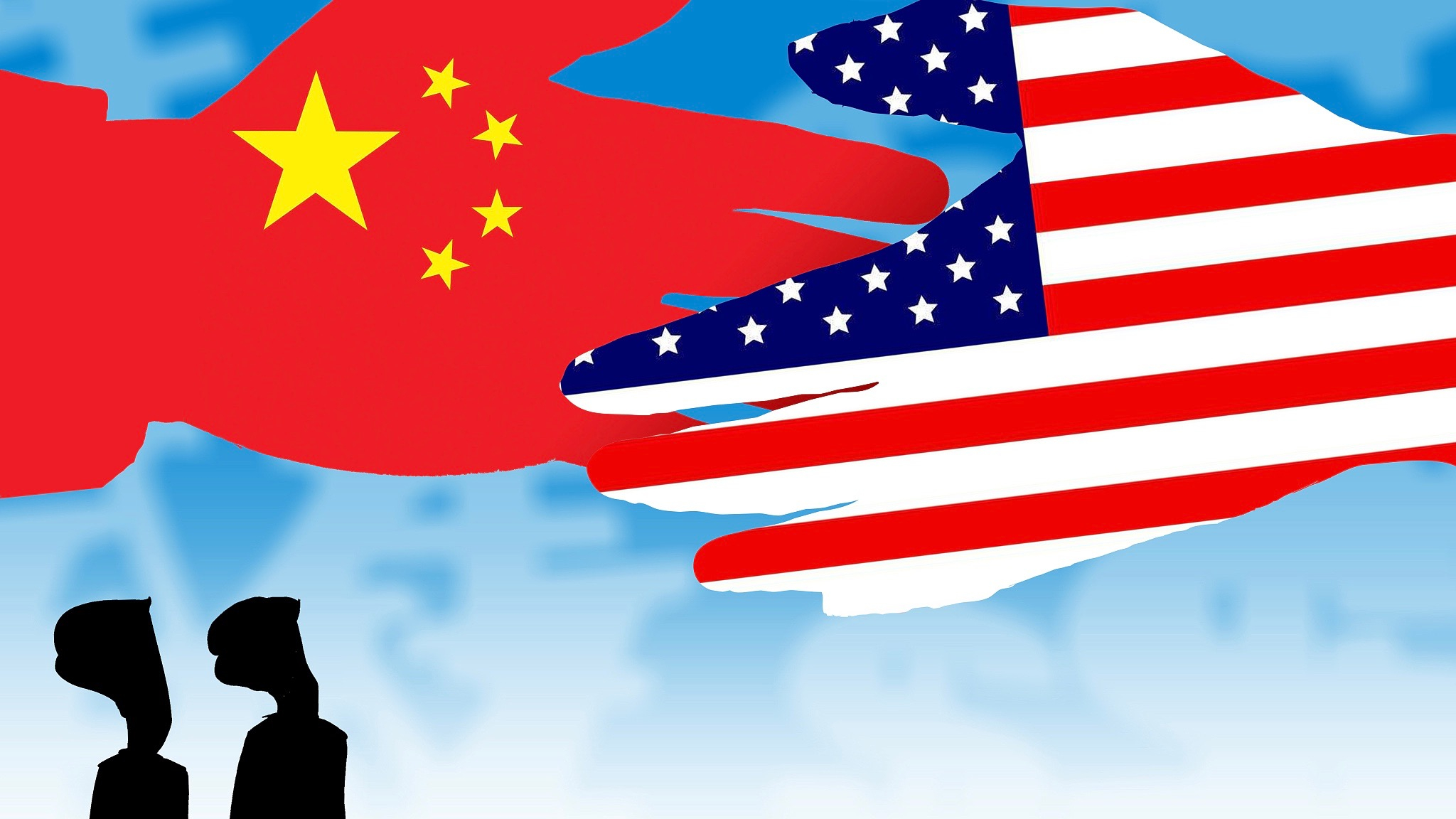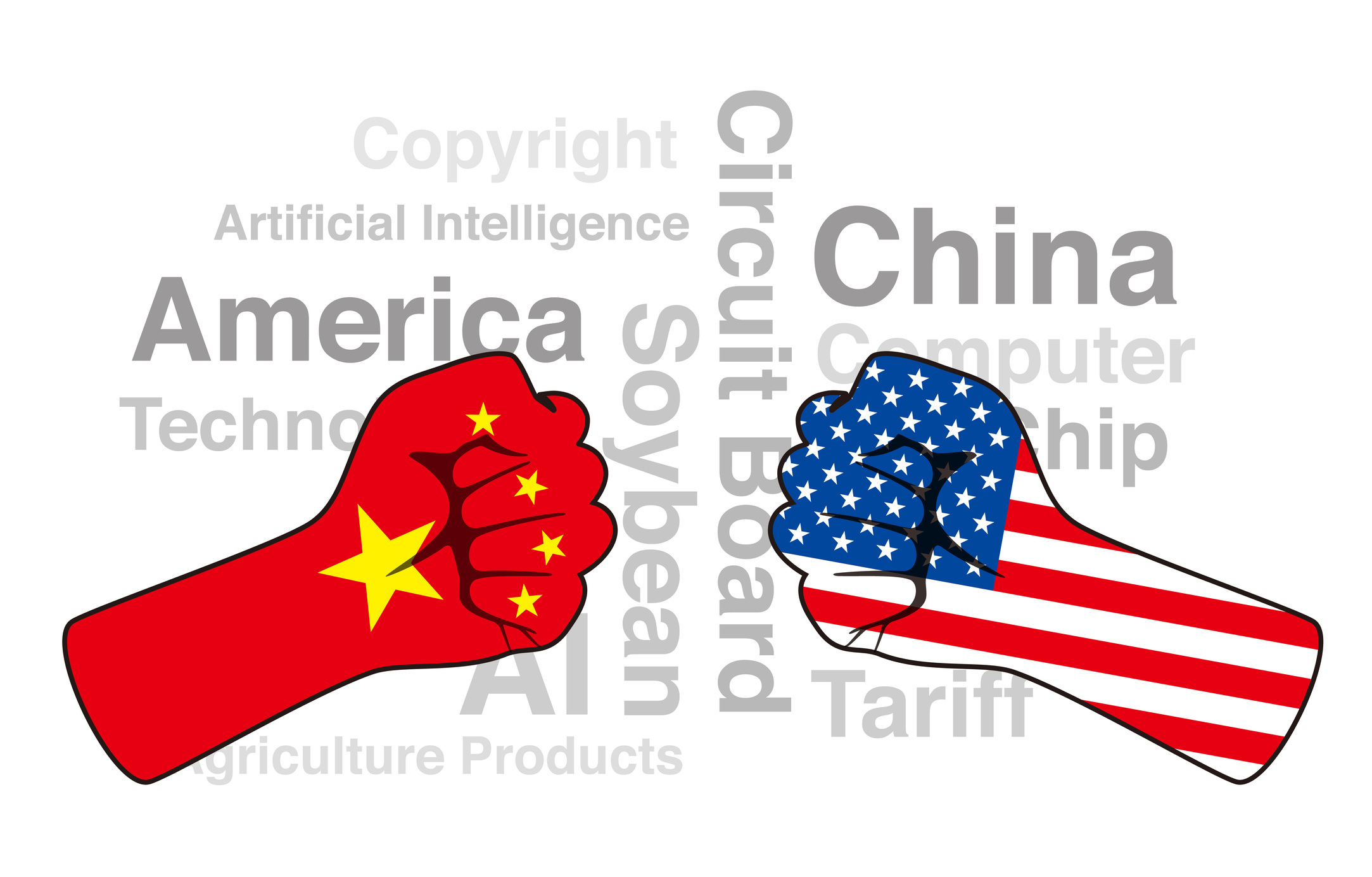
Asia Pacific
19:18, 29-Apr-2019
Can the U.S. and China find middle ground in new global order?
By Wang Xiaonan
04:23

The world's largest two economies are closing in on a long-awaited trade deal with a new round of talks coming around. U.S. Trade Representative Robert Lighthizer and Treasury Secretary Steven Mnuchin will arrive in Beijing for talks starting on Tuesday. A week later, Chinese Vice Premier Liu He will lead a delegation to Washington for the final legs of negotiations since the trade truce last December.
Read more: Behind the Beijing-Washington trade truce
The bitter year-long trade conflict has afflicted both countries with ruinous loss and put the global economy on a roller coaster. Spooked stock markets and restless transboundary businesses have been anxiously expecting reconciliation between Beijing and Washington.
Now they see a glimmer of hope. "Substantial progress has been made in purchases and structural issues like foreign investment liberalization, intellectual property rights protection and capacity reduction, and media reports on the enforcement mechanism are very positive," said Jacob Parker, vice president of China Operations at the U.S.-China Business Council, during a recent interview with CGTN.
Read more: A review of China-U.S. trade war in 2018

Getty Images
Getty Images
Nonetheless, some structural issues from Beijing, including subsidies and SOE reform, still top Washington's agenda. To fully address these concerns, the U.S. government can "align its negotiating priorities with the domestic priorities of the Chinese government," said Parker. Hopes that China would change the way its economic system operates will dampen the chance to hammer out a pragmatic deal.
"Ninety percent has been done and we are now in the final stage," said Ruan Zongze, executive vice president of the China Institute of International Studies, who, however, pointed out that a trade deal, which looks likely to be reached soon, would not be the end of the wrangle between the existing hegemony and the ascending power.
The rivalry between the two heavy hitters is a token of an unfolding geopolitical competition since the Obama era, when the "pivot to Asia" strategy informed Washington's diplomatic approach. The unfinished legacy was explicitly inherited by the Trump administration – the Pentagon defined inter-state strategic competition instead of terrorism as the primary concern in U.S. national security at the end of 2017.
The trade clash is likely the initial stage in this lengthy entanglement. The protracted dispute on trade is more out of Washington being defensive in the face of a rising country that prospered under a different system and participated in world affairs in a departure from the rules of the predominant game.

Wall Street, New York City /Getty Images
Wall Street, New York City /Getty Images
But pure trade disputes are actually much easier to resolve than what seems to be long-term contention ahead. Many analysts say tech is becoming the next arena in the China-U.S. power struggle. "Tech is a very challenging issue. And unfortunately, the industry concerns are increasingly mixing with the strategic concerns between the two countries," Parker said.
Cutting-edge technology not merely provides the thrust for economic growth but is vital to national security through military and intelligence use. For instance, the U.S. used drones for reconnaissance in the Middle East; China is catching up in developing aircraft carriers and satellite systems to protect its geopolitical interests.
Therefore, it's imperative, noted Parker, that the two sides "clearly define what is considered to be national security, what is considered to be a military use product, and ensure we're not using national security for protectionist purposes in either the U.S. or China."
As such, a trade deal will probably usher Beijing and Washington into a new epoch where a fight for the tech crown or other problems may arise. However, that will hardly hijack the bilateral ties given the sheer size of the two economies. "That'll be a situation where China and the U.S. will accommodate with each other," Ruan told CGTN.
The two countries are highly complementary in the hi-tech spectrum, in the eyes of Zhou Hao, a former statistician with Morgan Stanley and Barclay. China has advantages – a large population, a huge market, ample goods, as well as world-class applications in artificial intelligence or other hi-tech areas, while the U.S. possess the tradition of technological innovation.

A robot in a shopping mall in Shanghai, China, October 19, 2018. /VCG Photo
A robot in a shopping mall in Shanghai, China, October 19, 2018. /VCG Photo
We are living in an unprecedented new era. Sea powers set off the wave of globalization, the industrial revolution catapulted Britain into the center of the world, and then the United States from the decay of Europe in the post-WWII era. Fast forward to the Fourth Industrial Revolution, where rhetoric that the age of Pax Sinica is coming back along with the end of Pax Americana. However, no one will emerge victorious at a time when the world order is being reinvented, so cooperation in the midst of strategic competition is set to become the new normal.
"Finding a duality between competition and cooperation will be a challenge in the years ahead," said Parker. The U.S. relationship with China has been predicated on China as a poorer country, as a country that would be a manufacturing platform for the world, according to Daniel Ikenson, director of Cato's Herbert A. Stiefel Center for Trade Policy Studies.
"So the engagement policy will be revised to some extent," he told CGTN. Moreover, China moving its way up the value chain and becoming a big and increasingly technology-driven economy makes the U.S. "a little bit warier and a little bit more interested in making sure that there are rules in place that they hadn't thought about in the past."
As China is reforming its economic structure, the U.S. is also supposed to initiate domestic reform – change the way it perceives the Asian powerhouse.
Videographer: Zeng Ziyi
Video editor: Lan Haowei

SITEMAP
Copyright © 2018 CGTN. Beijing ICP prepared NO.16065310-3
Copyright © 2018 CGTN. Beijing ICP prepared NO.16065310-3